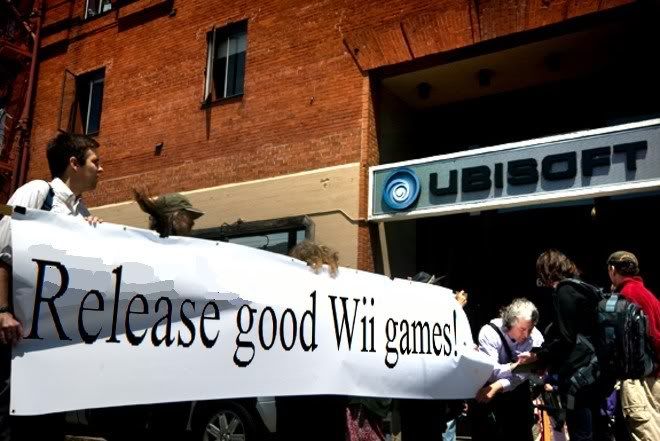... from early nineties.
---------------------------------------------------------
The time has come to acknowledge a fundamental shift in our industry that has been developing for some years. As I observed in an essay last issue, games are getting bigger. There's another side to this: the development cost of a computer game has increased dramatically. This is changing every aspect of our industry. In the early 80's, computer games were all produced by lone wolves. Development times were three to six months. Nasir Gebelli or Bob Bishop would grind out several games a year. The development cost of such games was little more than the programmer's time, and the return could be enormous. But by the mid-80's, the boom years were over and there was no easy money to be made. With each passing year, the development costs grew larger. Small teams began working on games, and lone wolves became rare. The following table summarizes my estimates of typical development costs for computer games: Year Typical Development Cost 1985 $25K 1986 $35K 1987 $50K 1988 $70K 1989 $90K 1990 $120K 1991 $200K The point of this table is that costs have shot up dramatically in the last two years. The first question is, why has this happened? The answer, I think, has to do with a variety of factors that can be summarized as the maturation of the distribution channel and the consumer. Just a few years ago, games tended to sell in a smooth distribution, with the best games selling 100,000+ units, good games selling 50,000 - 100,000 units, and weak games selling 25,000 - 50,000 units But in the last few years, that has changed as consumers gravitate more exclusively toward the hits. Nowadays a hit game will sell a quarter of a million units, while a good game will sell 50,000 units. We could put an optimistic face on this and say that the market has become more efficient at selecting the better quality games. But it's more complicated than that. The distributors and retailers have become pickier. They don't want to carry good games that sell 50,000 units; they want only the 250,000 unit hits. This has created a kind of self-fulfilling prophecy with respect to games. If the big distributors and retailers decide to carry a title, it is guaranteed good sales. If not, it dies. This phenomenon has accelerated the separation of games into big hits and losers. It also gives distributors and retailers a surprisingly large voice in game design. Another factor in all this is the impact of marketing costs. In the old days, marketing was simple and cheap. Nowadays, the marketing campaign for a game can cost $100K. You can't afford to spend that kind of money on a dog. Realizing this, publishers now go for the big hit. There is simply no point in wasting time on a good game. The only thing that works in this new regime is the big hit. One big hit like SimCity or Wing Commander can make a company. A dozen good products only permit you to tread water a little longer. Publishing games has thus become a huge gamble. If your game hits, you make a ton of money; if not, you lose a ton of money. It makes a lot of sense, under these circumstances, to push the odds in your favor by spending a lot of money on the product itself. Unfortunately, it is possible to take this strategy to dangerous extremes. The two biggest hits of the last year, Wing Commander and King's Quest V, illustrate just how far some companies are willing to go to get a hit. The development budgets for both products are rumored to be far in excess of anything previously undertaken (and the products show it.) It could be said that Sierra and Origin simply bought market share. They've proven that, if you throw enough money at a product, you can make a real winner. But there's there's a catch to this strategy: it only works in the absence of significant competition. Had every major publisher in the industry released a monster-budget product last fall, Wing Commander and King's Quest V would have had to share the pie with the other lavish productions, and it is likely that everybody would have lost money. So the question becomes, how can the industry stabilize on the ideal development budget? Are publishers going to be forced into a self-destructive big-budget war to remain competitive? One thing is certain: with all the high-stakes finance, the small-time operator has been squeezed out. There are a lot of people out there who nurse dreams of creating their own games at home. Many of them subscribe to this Journal. It's time to say it loud and clear: you at-home amateurs don't stand a snowball's chance in hell of getting a game published. You might as well be using your videocamera to make a movie to sell to Hollywood. The same thing goes for the lone wolves out there. Face it: there is no way that an individual can make a commercial computer game these days. The cost have risen too high. For the moment, the development studio is the only place where computer games can be made. You've got to have a team of specialists to put together a game with the quality design, graphics, sound, and animation necessary to compete in today's marketplace. But even the design studio is threatened. Independent design studios prospered because of a stupid flaw inherant to most publishers. Until the last few years, most publishing executives believed that they knew as much about game design as their staff. In their view, there were no game designers, only programmers. This encouraged executives to participate in the design process. Of course, a busy CEO or marketing VP doesn't have the time to think through all the ramifications of a design change, but this didn't stop them from ordering such changes. The result was a chaotic design that advanced in herky-jerky fashion, bumbling along until reality caught up with the vanities of the executives and they put the mutant design out of its misery. Independent design studios worked because they were more resistant to the jerking around. They could get a game done on time and under budget because they could stand up to the pressures emanating from the executive suites. That is why most publishers during the mid-80's reduced the size of their in-house development staffs and relied more heavily on outside development studios. The pendulum is now swinging back. Budgets have risen so high that publishers are becoming reluctant to commit huge amounts of money under highly risky circumstances where they have little control over the product. A publisher might be willing to risk $100K on an outside studio, but not $500K. The rising costs of software are enticing publishers to return to in-house development. The most insidious effect of rising development budgets will be an increased reluctance of publishers to take chances on unconventional games. The penalties for failure being so much higher, publishers simply cannot afford to take big chances on untried concepts. The dilemma we're in is that such prudence guarantees our doom. We are an entertainment industry; creativity is our lifeblood. We desperately need the SimCitys and Railroad Tycoons pumping new blood into our industry's consciousness. This process can only continue. I expect some short-term re-adjustment to come. Our industry has yet to produce a monster-budget flop like Hollywood's fabled Heaven's Gate &emdash; but you can be sure that we'll have one pretty soon, and that will instill a greater sense of prudence in publishers with respect to monster-budget products. Over the long run, though, the trend towards steadily higher development budgets will continue. CD-ROM will hasten the process. Brian Moriarty was the first to observe that the prime effect of CD-ROM will not be so much to permit better graphics as to mandate higher costs. Moreover, an increasing percentage of development costs will go towards graphics rather than game design and programming; this will shift creative control away from the game designer and towards a new breed of multi-media producer.Why the increase?
Bigger development budgets
Problems
No more small-time operators
Development studios
Less Diversity
Future trends
http://www.erasmatazz.com/library/JCGD_Volume_4/Modern_Times.html
“In the entertainment business, there are only heaven and hell, and nothing in between and as soon as our customers bore of our products, we will crash.” Hiroshi Yamauchi
TAG: Like a Yamauchi pimp slap delivered by Il Maelstrom; serving it up with style.
































































